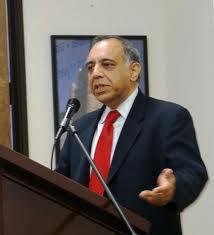Association of Small Cities
Representatives of small cities often ask for policy advice pertaining to the development needs of their individual cities. One response to this demand is to prepare consulting reports for the cities. However, the policy impact of this approach is very limited because disparate claims of small cities cannot gain much traction in policy discourse in the existing political structure in Pakistan. We are proposing an alternative approach that seeks to empower small cities with the creation of a collective voice. We believe such a collective voice, backed by the provision of political, economic and legal advice, can have much greater leverage in the policy dialogue.
More than half the global population now lives in urban areas and the majority of this resides in non-metropolitan centers. It stands to reason that small cities have a major role to play in economic growth and development. Theoretical arguments along these lines were articulated in the 1960’s when a small town was conceptualized as providing basic connections between dispersed agricultural and agglomerated urban populations[1]. However, the contribution of small cities to national growth has been quite uneven across countries.
In China, for example, town and village enterprises (TVEs) were very significant contributors to growth over the last quarter-century. In Pakistan, on the other hand, policy statements from the Government of Pakistan regarding the role of small towns in the development of the country have been conspicuous by their absence. Large urban centers such as Karachi and Lahore dominate the policy discussion, more often than not from a very city-specific perspective focused on services and living conditions. Consideration of the urban space as a system of cities to be optimized as a whole is non-existent. As a result, the potential of secondary cities is not just unrealized, it is also under-investigated.
Advances in transportation and development in recent decades have been such that the footprint of metropolitan centers has grown “taking over many of the economic functions of a small town[2]. At the same time, imperfections in key markets such as that of land, have limited the displacement of mature industries from large to small cities. What is actually happening in small cities is not very well known. Nevertheless, “the fact remains that these small places exist and that economic activities are performed in them just as they are in the larger places[3]. One objective of the proposed exercise is to build an understanding of the socioeconomic and political contours of small cities through a ‘listen and learn’ interaction with their representatives. Based on this interaction and the emergent sense of common issues, we hope to catalyze a collective voice and also identify a research agenda to leverage that voice for policy changes needed to realize the potential of small cities.
The current system of political representation in Pakistan, often, does not overlap with the articulation of the interests of small cities. In cases where the major part of a constituency is a city itself, the said problem does not arise since the city as an entity stands well represented. However, for smaller towns, the articulation of their interests is over-ridden by constituency-wide interests, patronage dispersal, and specific party policies regarding constituencies larger than the city. Thus, problems particular to the urban nodes are ignored and a coherent development framework that integrates small towns as focal points of the development model cannot come about. An alternative mechanism of city-level representation is needed to overcome this constraint. The proposed project aims to test if a collective voice institutionalized in an Association of Small Cities can serve as such an alternative.
In summary, this project seeks to answer the following set of questions:
- How can small cities become more effective in influencing national/provincial thinking critical to their growth and development?
- How can issues relating to drivers of economic growth through small cities be prioritized?
- In the absence of elected city-level representatives, how can city needs be best addressed?


